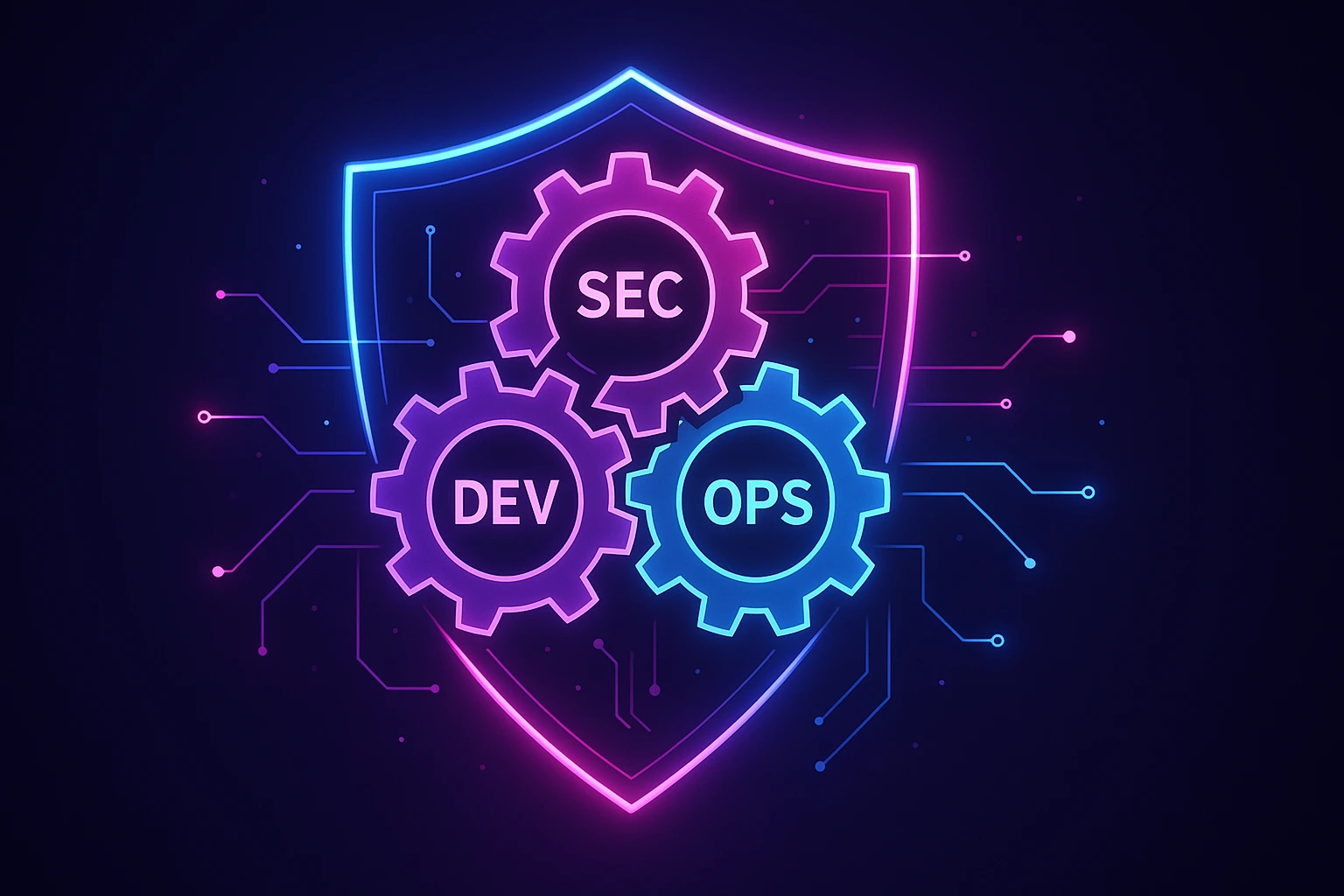Your deployment failed again. The release window closes in two hours, and your team can't determine if it was a profile conflict, a missing dependency, or another metadata issue your generic DevOps tool missed.
The problem is simple: Generic DevOps platforms treat Salesforce like any other application. They're not. Salesforce's metadata-driven architecture and complex dependencies require specialized handling that traditional deployment tools weren't designed to provide.
When your DevOps platform ignores these realities, the costs multiply: failed deployments waste release windows, compliance gaps emerge during audits, and manual workarounds eliminate automation benefits. Teams lose velocity. Quality suffers. Confidence erodes.
Generic DevOps platforms may appear flexible enough for Salesforce, but they overlook the platform's unique metadata and release complexities—creating hidden risks that slow delivery and compromise reliability. Salesforce teams need purpose-built DevOps solutions to maintain speed, compliance, and control.
This article exposes the specific risks generic platforms create for Salesforce teams and explains why purpose-built solutions deliver the reliability enterprise Salesforce operations demand.
Security and Compliance Exposure
Extracting metadata from Salesforce's security boundary creates an immediate compliance risk. Generic DevOps pipelines move configuration data (including privilege settings, field-level security, and permission structures) into external Git repositories and CI servers. Each external system inherits the security controls of its host environment, which rarely match Salesforce's enterprise-grade protections.
Financial services firms, healthcare providers, and government agencies must satisfy specific regulatory requirements that mandate strict data handling controls:
- Audit trail completeness (SOX 404): Regulations require immutable logs showing who changed what configuration, when, and under what approval authority. Fragmented systems produce incomplete audit trails that auditors flag immediately.
- Data processing location restrictions (GDPR Article 44): European regulations prohibit storing metadata containing personal data classifications outside approved jurisdictions. External Git repositories may reside on servers in non-compliant regions.
- Access log retention (HIPAA 164.312): Healthcare regulations mandate specific retention periods for access logs and configuration change records. External systems often use different retention policies that create compliance gaps.
Each requirement becomes harder to satisfy as metadata and evidence fragment across systems with inconsistent logging standards and retention policies. When metadata crosses the Salesforce API boundary, compliance teams must verify that external systems meet identical standards. Most cannot.
The result: audit findings that require formal remediation plans, extended audit cycles, and documented exceptions that executive leadership must sign off on quarterly. The exposure manifests in three ways that directly threaten enterprise security posture and regulatory standing.
Expanded Attack Surface
Generic DevOps platforms force you to expose Salesforce credentials outside your org—dramatically expanding your attack surface.
Every external tool in a generic DevOps pipeline requires API access to your Salesforce environment. That means credentials—OAuth tokens, SSH keys, or service accounts—stored in Git repositories, CI servers, environment variables, and developer workstations. Each storage location creates another breach point.
The risk compounds because these tools typically demand administrator-level access to handle Salesforce's full metadata scope. Compromised credentials don't just expose data; they grant attackers complete org control.
Consider a typical generic DevOps setup: GitHub hosts your repository, Jenkins runs your CI pipeline, and Jira tracks your releases. Each system requires separate authentication to Salesforce. Each authentication layer multiplies potential entry points. A single compromised laptop, misconfigured cloud environment, or exposed configuration file can leak credentials that provide full production access.
Salesforce's native security model enforces multi-factor authentication (MFA), IP restrictions, and session timeouts automatically. External systems require manual configuration of equivalent protections across every integration point. As your DevOps toolchain grows, so does your security management burden—and your risk.
Purpose-built Salesforce DevOps solutions eliminate this exposure. By operating entirely within Salesforce's security perimeter, they leverage existing authentication, authorization, and audit controls without requiring credentials stored in external systems. Your attack surface stays contained within Salesforce's zero-trust architecture rather than expanding across every tool in your pipeline.
Fragmented Security Controls
When a developer leaves an organization or changes roles, Salesforce access gets revoked immediately. But if a DevOps platform relies on external Git repositories and CI servers, that same developer may retain the ability to view sensitive metadata, commit changes, and even trigger deployments for days or weeks afterward. This gap between intention and reality creates both security vulnerabilities and compliance violations that auditors flag during access reviews.
The root cause is system fragmentation. Salesforce enforces authentication through multi-factor authentication, session timeouts, and IP restrictions. External Git hosts like GitHub or GitLab maintain entirely separate authentication systems with their own permission models. CI servers add yet another layer of access controls. These systems do not communicate with each other, which means access revocation becomes a manual, multi-step process requiring separate actions across every platform in the toolchain.
The practical consequence: orphaned accounts. A contractor whose Salesforce credentials were disabled on their last day may still possess valid credentials to the Git repository, where they can view configuration details, commit to branches, or examine business logic. They cannot log into Salesforce, but they retain access to the systems that feed the deployment pipeline. Each tool in the stack maintains its own user directory, and without centralized identity management, there is no automated mechanism to propagate access changes across platforms.
This creates a control gap that regulations like Sarbanes-Oxley (SOX) explicitly prohibit. SOX requires organizations to demonstrate timely access revocation and maintain audit trails proving that former employees cannot access financial systems or the configurations that govern them. During compliance audits, security teams must show evidence of access reviews, role certifications, and immediate revocation procedures. Fragmented systems make this nearly impossible to prove conclusively, as auditors must trace access rights across multiple platforms, each with different permission structures and review cycles.
Data Residency Violations
Generic DevOps platforms create an invisible compliance risk: metadata extracted to external Git repositories may reside on servers in regions where data protection regulations prohibit storage. This violation occurs even when organizations believe they are only storing configuration files, not actual business data.
Regulations like GDPR, China's Personal Information Protection Law (PIPL), and Russia's data localization laws do not distinguish between patient records and the permission structures that control access to those records. From a regulatory perspective, metadata that defines field-level security, permission sets, and user access hierarchies reveals sensitive information about data classification, user roles, and organizational security architecture. A repository containing profile configurations for "Oncology_Physician," "Billing_Specialist," and "Clinical_Research_Coordinator" exposes healthcare organizational structure and indicates what types of sensitive data the organization processes.
Consider a European healthcare provider using a U.S.-based GitHub repository to store Salesforce metadata. That repository contains no patient records, yet it holds permission set configurations, field-level security rules, and role hierarchies that govern patient data access. European data protection authorities consider this metadata subject to the same geographic storage restrictions as the underlying patient information it protects. The result: a GDPR violation that technical teams never anticipated because they focused on data content rather than data access controls.
Organizations typically discover these violations during Data Protection Impact Assessments (DPIAs) or routine regulatory inspections. At that point, the requirement to relocate data storage infrastructure creates significant operational disruption and expense. Repository migration requires coordination across development teams, revalidation of integrations, and potential service interruptions during the transition.
The problem compounds because generic Git platforms rarely provide granular control over repository location at the organizational level. Companies must either accept compliance risk or build complex repository segmentation strategies that fragment DevOps workflows by geography. A multinational organization might maintain separate GitHub Enterprise instances for European, Chinese, and Russian operations, each with its own authentication, permission model, and integration pipeline. This segmentation defeats the efficiency gains that drove DevOps adoption in the first place.
Compliance auditors identify these fragmented evidence chains as immediate control failures requiring remediation. When operational workflows introduce additional failure points, security exposure compounds further.
Operational Complexity, Maintenance Burden and Lost Velocity
Git-based workflows weren’t built for Salesforce metadata, creating a two-phase burden: initial deployment complexity and mounting maintenance costs. Both phases drain engineering capacity that should focus on delivering business value rather than managing infrastructure.
Initial Deployment Complexity
Salesforce stores configuration as XML files that pack multiple settings into single documents. A profile XML file runs thousands of lines: field permissions, object access, system settings, all nested together. When two developers change different fields in the same profile, Git sees hundreds of conflicting lines but can't tell which changes actually conflict.
This forces teams to choose between two options, both bad:
- Manually resolve conflicts on every deployment
- Let only one developer touch profiles at a time
The skill problem makes this worse. Salesforce administrators know how to configure the platform, but most have never written a YAML pipeline or debugged a shell script. Running CI servers requires exactly that kind of DevOps work. Companies looking for people who know both Salesforce and infrastructure engineering find very few candidates. Training your existing team takes months and assumes they want to move from point-and-click configuration to writing deployment scripts.
Then there's sequencing. Salesforce checks components in a specific order during deployment:
- Custom objects before the profiles that reference them
- Profiles before the permission sets that extend them
- Flows after the objects and fields they interact with
Git doesn't understand these relationships. Teams either manually arrange components in the right order, or they write scripts to figure out dependencies automatically. Both approaches break when Salesforce adds new metadata types with new dependency rules.
Each problem makes the others worse. What starts as a simple deployment issue becomes a compounding barrier as teams try to scale their release process.
Ongoing Maintenance Overhead
The true cost emerges after implementation. Generic pipelines require continuous maintenance across three areas. Each maintenance category consumes time that should be used to advance product roadmaps rather than preserving existing functionality.
Salesforce Release Compatibility
Seasonal platform releases introduce new metadata types and deprecate API versions. Generic tools require plugin updates, script modifications, and integration testing after each release. Teams spend time maintaining compatibility rather than shipping features, a burden that compounds across multiple sandboxes and production orgs.
Credential Management
Security policies require regular token rotation. OAuth tokens expire, SSH keys need updates, and service account passwords change. Each rotation requires updating CI configurations, testing pipelines, and documenting changes. Administrative overhead grows with every integration point: Git, Jenkins, Jira, and monitoring tools each maintain separate credentials.
Version Compatibility Matrices
Git clients, CI servers, and Salesforce APIs must maintain compatible versions. Minor mismatches halt deployments. A Salesforce API deprecation can break working pipelines overnight, forcing emergency fixes that delay planned releases.
Velocity Impact
Release preparation, which should take hours, often extends to days. The root cause is the manual coordination required when generic platforms cannot automatically track Salesforce metadata dependencies. Teams must identify which components relate to each other, document those relationships, and validate that all required elements are included in the deployment package. A single user story might touch a custom object, validation rules, page layouts, permission sets, and workflow automations. Generic platforms treat these as separate files rather than interdependent configuration elements.
Failed builds accumulate as teams discover missing dependencies only after deployment attempts. A validation rule deployment fails because it references a custom field that wasn't included in the package. That triggers another build with the field, which then fails because it requires updates to page layouts and permission sets. Each failure requires investigation, package modification, and revalidation. What began as a straightforward deployment becomes an iterative troubleshooting exercise.
Engineering capacity that should focus on feature development diverts to pipeline maintenance, reducing throughput and increasing opportunity costs. Business stakeholders receive delayed access to functionality they need to serve customers or respond to market changes. The velocity reduction becomes visible in burndown charts, sprint retrospectives, and quarterly planning sessions where teams consistently miss delivery targets.
Operational complexity creates downstream consequences for compliance and oversight that extend beyond immediate velocity concerns.
Governance Blind Spots and Audit Failures
Regulatory frameworks demand complete, immutable records of every change. Generic DevOps toolchains fragment this evidence across disconnected systems, creating gaps that auditors cannot accept. The fragmentation turns routine compliance activities into multi-week, evidence-gathering exercises that still produce incomplete documentation.
Fragmented Audit Trails
During SOX audits, examiners require evidence that production changes received documented approval before deployment. When that evidence spans Jira approval timestamps, Git commit logs, and Jenkins deployment records, teams manually construct correlation spreadsheets (a process that produces incomplete documentation that auditors frequently challenge).
A typical deployment path touches four systems:
- Jira tracks the requirement
- Git records the code change
- Jenkins logs the deployment
- Salesforce captures the runtime result
No single system knows the complete story. When auditors ask "who approved this permission change and when did it deploy?" (a standard SOX control question), teams must export data from four sources and manually correlate timestamps.
The correlation fails frequently. Git commits use developer local time, Jenkins uses server UTC, Jira follows business hours, and Salesforce tracks API calls. Reconciling these into a coherent timeline requires manual effort that introduces errors. Worse, each system maintains its own backup and retention schedule, so historical evidence may disappear unevenly.
Segregation of Duties Failures
Compliance frameworks require separation between development, approval, and deployment. Generic pipelines make this difficult to enforce. A developer with Git commit access and Jenkins permissions can bypass approval workflows entirely. Even with branch protection, the controls exist outside Salesforce's permission model, creating parallel security schemes that drift out of sync.
The impact becomes visible during audit fieldwork. Auditors request evidence that a specific production change (say, modifying field-level security on a custom object containing sensitive data) received approval from the data governance committee before deployment. With generic toolchains, teams must correlate a Jira approval timestamp, Git commit hash, Jenkins build number, and Salesforce deployment log entry. If timestamps do not align within minutes, auditors question the control effectiveness. If any single piece of evidence is missing (perhaps the Jenkins log rotated out), the finding escalates.
Auditors examining these architectures consistently issue findings: unauthorized changes reach production, approval evidence lives in systems the audit cannot access, and rollback logs lack the detail required to verify remediation.
The Native Solution Advantage
Native platforms eliminate these mismatches by keeping DevOps processing where Salesforce data lives. This architectural decision addresses all three risk categories simultaneously while reducing operational overhead. The following framework illustrates how native platforms mitigate each risk through fundamental design choices, rather than introducing added complexity.
Security and Governance Through Containment
External metadata extraction creates the security vulnerabilities and compliance exposures that threaten regulated enterprises. Generic platforms require exporting Salesforce configuration to external Git repositories, CI servers, and collaboration tools. Each integration point expands the attack surface and introduces new authentication mechanisms that security teams must monitor and audit separately.
Native platforms operate entirely within Salesforce's protected environment, consolidating both security controls and governance processes into a single system that regulators have already approved for production data access.
This unified containment approach delivers four distinct control advantages:
- Security containment eliminates external attack vectors. Metadata never crosses the API into external repositories. Encryption, single sign-on authentication, and multi-factor authentication build upon Salesforce's enterprise-grade implementations rather than requiring separate credential management. Access control uses Salesforce permission sets that security teams already manage. No OAuth tokens for Git access, no SSH keys for CI servers, no service accounts spanning multiple systems.
- Unified governance eliminates audit blind spots. Fragmented toolchains force auditors to reconstruct evidence chains across multiple platforms, each with different logging formats and retention policies. A unified platform records requirements, approvals, changes, and deployments with correlated timestamps and complete lineage. When auditors request evidence, teams generate reports from one system rather than manually compiling documentation from Git commits, Jira tickets, Jenkins logs, and Slack conversations.
- Policy enforcement prevents non-compliance before deployment. Native platforms validate Salesforce-specific rules automatically: profile permissions follow least privilege, flows include error handling, test coverage meets thresholds. These validations happen within the deployment pipeline without custom scripting or external scanning tools. Non-compliant changes never reach production because the platform blocks them at submission.
- Segregation of duties uses existing security infrastructure. Instead of maintaining separate approval workflows in external tools, native platforms enforce segregation through Salesforce permission sets. The same security model that controls production data access governs who can approve deployments, merge code, or promote changes between environments. Security teams manage one permission structure rather than synchronizing access rights across multiple platforms.
This consolidated approach transforms audit preparation from a multi-week evidence-gathering exercise into an on-demand reporting task. Compliance certifications remain intact because the entire development lifecycle operates within the same security boundary that regulators already validated.
Efficiency Through Metadata Intelligence
Git-based workflows create the operational complexity and maintenance burden that destroy team velocity. Salesforce-optimized version control understands metadata dependencies by parsing the Metadata API's describe calls and maintaining a directed acyclic graph of component relationships. When you select a Flow for deployment, the system automatically includes the Custom Objects, Fields, Record Types, and Permission Sets that Flow references, eliminating the manual dependency checklists that generic tools require. This intelligence extends across all metadata types, handling the complexity that breaks generic pipelines.
Rather than treating profiles as opaque XML, native version control parses the structure semantically, comparing field-level permissions, object access, and system settings independently. This eliminates false conflicts where Git flags entire sections as changed when only one permission attribute differs.
Declarative changes become versionable. When an administrator modifies a validation rule through point-and-click configuration, the native platform captures that change alongside developer code commits. Both deploy together in coordinated releases, eliminating the drift that generic tools cannot track.
Click-based pipelines enable administrators to deploy without learning Git. Developers use familiar Salesforce UI rather than external CI dashboards.
Cost Control Through Simplified Architecture
Generic DevOps platforms carry hidden operational costs that compound over time. Each component in the toolchain requires ongoing maintenance: Git servers need security patches, CI runners require version updates, integration plugins break when upstream APIs change. Engineering teams spend time troubleshooting authentication failures between systems, updating deprecated API calls, and resolving version conflicts when one tool updates before its dependencies are ready.
Native platforms eliminate this maintenance burden entirely. There are no external servers to patch, no plugin versions to reconcile, and no credential rotation across multiple systems. Updates happen automatically as part of Salesforce's standard release cycle, with compatibility guaranteed because the platform evolves alongside Salesforce itself.
The financial model simplifies correspondingly. Organizations replace itemized spending on Git hosting subscriptions, CI runner licenses, integration plugin fees, and support contracts across multiple vendors with a single subscription. This consolidation converts unpredictable operational costs into fixed budgeting that finance teams can plan against confidently.
Moving from Risk to Results
Generic DevOps platforms create measurable risk for Salesforce teams: security exposure from external metadata storage, velocity loss from incompatible workflows, governance gaps from fragmented audit trails, and mounting maintenance costs from integration complexity.
Delaying action compounds the problem. Failed deployments accumulate, audit findings multiply, and engineering time continues flowing into maintenance rather than innovation.
Native platforms reverse this pattern. Security improves because metadata remains where your data lives. Velocity increases because tools understand metadata dependencies automatically. Governance strengthens because audit trails stay unified and complete. Costs stabilize because external integrations disappear.
The City and County of Denver experienced a 70% increase in deployment speed after adopting a native platform, streamlining their Salesforce development processes and improving overall efficiency. Tasks that previously required both a developer and a release manager working together for hours are now completed with a single resource in minutes.
Organizations replace reactive firefighting with proactive delivery, converting DevOps from a cost center into a velocity multiplier.
Request a demo with Flosum to assess your current DevOps architecture against these risk categories and build a migration plan that eliminates security exposure, accelerates delivery, and satisfies regulatory requirements.
Thank you for subscribing









